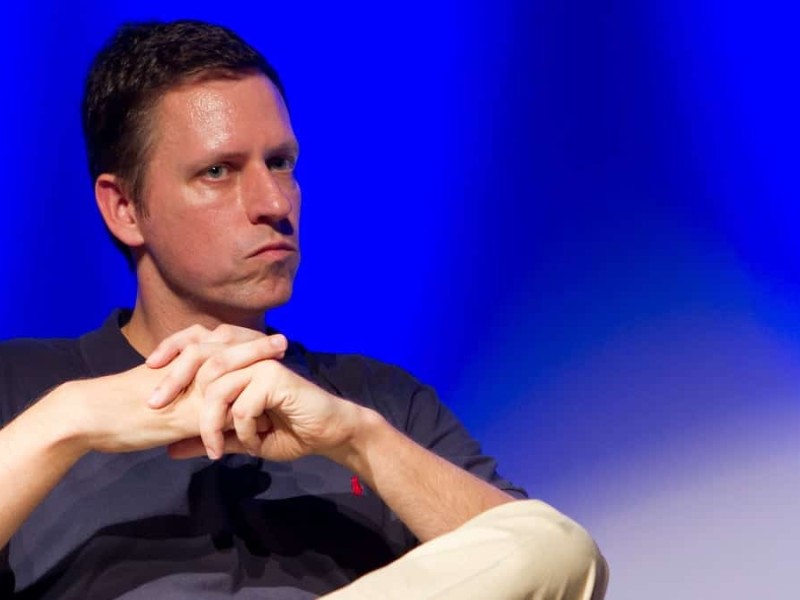Right-wing Silicon Valley hijacking Ohio’s future
Columnist Taylor Dorrell writes that Senator J.D. Vance and big money supporters such as Peter Thiel and Mark Kvamme could play an outsized role shaping the state in the coming years.

At any given moment in the motion of history – especially during those distinguished times often characterized as “unprecedented” or “extraordinary” – it’s far too common, almost expected, to hear an idiom popularized by Fredric Jameson: “It’s easier to imagine the end of the world than the end of capitalism.”
The cliché has long overshadowed a far more relevant verse, pertinent both for the country and for our city. And that is Jameson’s follow up sentence: “We can now revise that and witness the attempt to imagine capitalism by way of imagining the end of the world.”
The future of Columbus, in both its predicted economic and population boom, is predicated on an economic turn back to the Great Lakes Megaregion. A turn grounded in the premise that climate change will cause a long-term migration inland away from extreme weather events, rising sea levels and droughts, and toward meteorological stability and access to fresh water. More familiar with this dystopian premise than any average Midwesterner is the small assembly of right-wing tech venture capitalists from Silicon Valley currently attempting to shape the region’s future in their own reactionary political image.
PayPal co-founder and the unofficial leader of Silicon Valley’s right-wing, Peter Thiel is a self-described libertarian, a loyal believer in unregulated free markets and dismissive of government intervention. He’s also a strategic political investor, finding consolation in Trump’s GOP. Thiel threw $15 million at J.D. Vance’s successful Senate run against Tim Ryan, an investment tied to the dismantling of constitutional democracy. “I must confess that over the last two decades, I have changed radically. … I no longer believe that freedom and democracy are compatible,” Thiel wrote in 2009.
Thiel’s right-wing politics, supported by Silicon Valley capital, have since merged with a belief in the Midwest as the future of tech, and he has scoured the so-called Silicon Heartland for startups to finance. This combination of Silicon Valley venture capital, right-wing politics and a faith in the Great Lakes Megaregion is cementing itself as a political force in the region and is beginning to generate a vision for its future.
It’s the same case with incoming Sen. Vance who, prior to his turn toward Trump, joined the 2018 “Comeback Cities Tour” with Tim Ryan to show Silicon Valley investors Midwestern cities. Vance also joined Steve Case in putting together a $150 million fund called Rise of the Rest – backed by figures like Jeff Bezos and Alphabet’s Eric Schmidt – funding startups throughout the heartland, seeking to bridge Silicon Valley capital with the Midwest.
Far less known among Ohio’s right-wing Silicon Valley members is Columbus-based venture capitalist Mark Kvamme. If Thiel is the ideological brain and Vance the political body, Kvamme operates as the boots-on-the-ground in the Midwest. He made headlines when he moved from Silicon Valley to Columbus to run the privatized JobsOhio program at the invitation of former Republican Gov. John Kasich. Kvamme stepped down from the position in 2012 but remained in Columbus where he co-founded the venture capital firm Drive Capital, of which he was named partner emeritus last month. Although Kvamme funded Kasich’s failed presidential campaign, he eventually relented to the Trump GOP, falling in line behind Vance’s Senate run.
It’s easy to imagine what a future run by reactionary Silicon Heartland forces could look like. It’s already been explored in Ready Player One, a book, later adapted for film, centered on a dystopian Columbus. In the sci-fi work, the city is home to tech companies that run a virtual reality video game that everyone lives within to escape a brutal world plagued by inequality and climate catastrophe. That antagonistic image of the future is as pessimistic and cynical as it is popular. There exists no counterweight to this narrative in culture. It’s much easier to imagine the future as a dystopian continuation of the present than a radical, optimistic alternative.
The image for Ohio’s future shaped by those like Thiel, Vance, and Kvamme matches that of so many dystopian and cyberpunk films of today. And while there’s resistance and struggle within local politics and the new labor movement, Silicon Valley and the GOP have set forth their project for the future. Their plan, as Jameson put it, is to imagine capitalism by way of imagining the end of the world.



